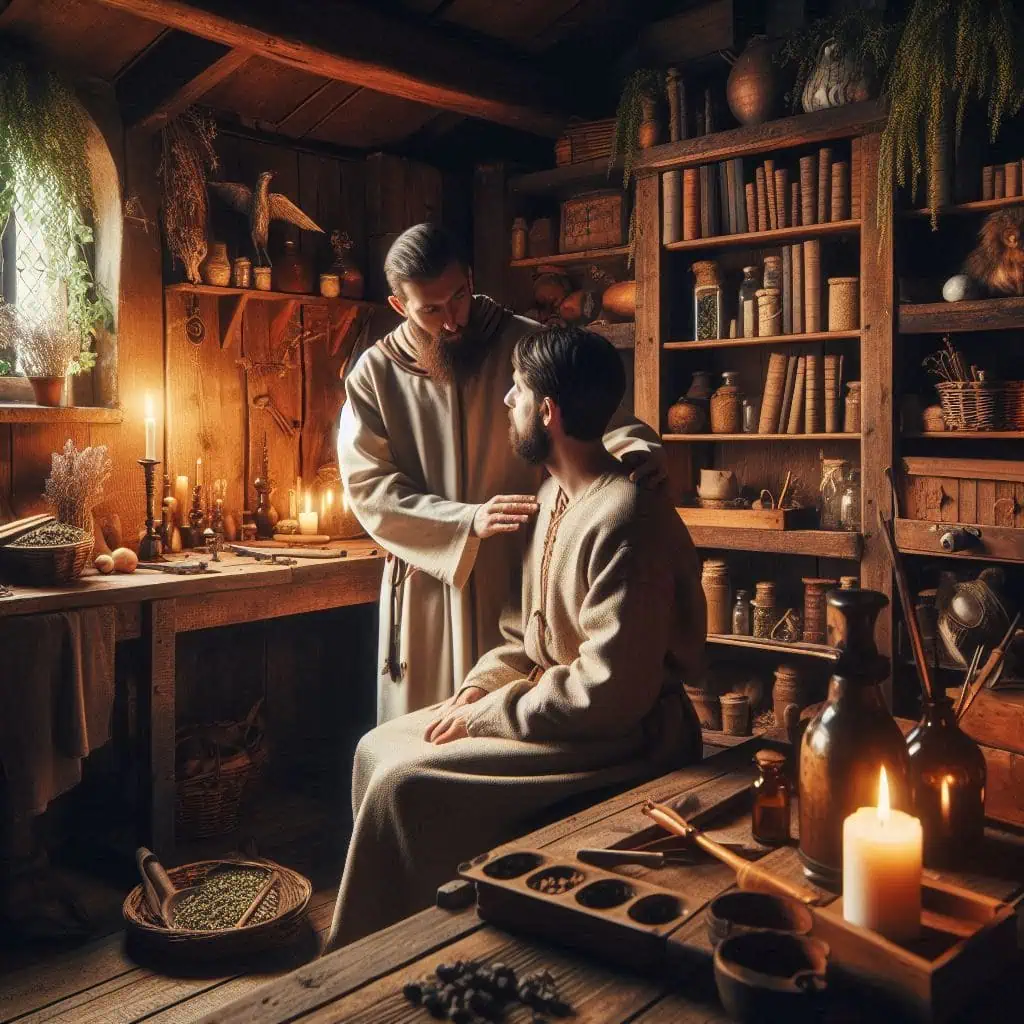Medieval doctors played a crucial yet often misunderstood role in healthcare during the Middle Ages. Drawing on a mix of ancient Greek theories, religious beliefs, and limited medical knowledge, they treated everything from plagues to wounds using techniques like bloodletting, herbal remedies, and astrology. With little understanding of bacteria or hygiene, many practices were based more on tradition and superstition than science. Still, doctors were respected figures, often working in monasteries or noble courts. This article explores the tools, training, and treatments that defined the life and work of a doctor in medieval times.

In the history of Medieval Doctors from the early to late medieval periods, no significant progress in the field of medicine was made during the medieval period. Dissecting a human corpse was considered illegal before the year 1000AD so doctors had no idea what was inside a human’s body!

As this practice prevailed over a large part of the medieval period, hence it was thought that diseases were caused due to the devil residing in people’s bodies. Priests mostly performed the duties of medieval doctors as they acted as healers.

A medical school that was established in the 9th century flourished and by the 12th century, it had an organized syllabus and it started issuing degrees and the first medieval doctors were established.
The present-day title of “Doctor” was used for the first time during the medieval period.
Medieval Doctors Teachings, Humour (element and Body Fluid)
The teachings of medieval doctors mostly revolved around the theory of humours. This theory stated that every human body contains four principal fluids or humours, black bile, yellow bile, phlegm, and blood.

For a person to remain healthy these fluids had to be in balance. This theory had a close relation to the theory of four elements, i.e. earth, fire, water, and air, with earth present in the black bile, fire in the yellow bile, water in the phlegm, and blood containing all four elements.

Types of Medieval Doctors
Medieval doctors were small in number so to qualify as a medical doctor was not an easy task in medieval times. The main types of medieval doctors were medieval physicians who had received an education at one of the universities and there were medieval surgeons who were inferior to medieval physicians.

There were medieval barber-Surgeons who were only allowed to let blood and pull the teeth. A medieval apothecary or dispenser of drugs was another type of doctor whom people mostly visited. The last type of medieval doctor was a medieval wise woman who treated patients with herbs and potions.

How Did a Medieval Doctor Diagnose Illness?
Medieval doctors usually had a book of diagnosis called “vademecum” and a urine chart with them. In order to diagnose the illness correctly, doctors used to analyze the color of urine.

They also smelled the urine along with checking the patient’s pulse. As doctors thought that bad smells brought diseases with them and in order to protect themselves from these diseases, they carried with them something that smelled nice.
How did Medieval Doctors Cure an ill Person?
Medieval doctors believed in the four humours hence mostly ill persons were treated by balancing their “humours overflowing”.

Balancing was done by making the patients bleed, applying leeches to their bodies, or by forcing the patient to vomit. Other ways of balancing included drinking yellow lentil soup, and taking a bath with hot water or with ice-cold water. Several diseases were also cured by the use of herbs.

Popular Medicine in Medieval Times
There was no significant advancement in the medical field, hence the medicines were also of a very basic type. Patients were mostly treated with medicine created from plants and herbs.

For smallpox patients were given finely ground roses with bamboo juice.

Wormwood and mint were used for the treatment of stomach pains whereas licorice and comfrey herbs were given to patients with lung problems.

Vinegar was mostly used for the cleaning of wounds and it was thought that it killed disease and helped in quick healing.

Equipment Available to Medieval Doctors
Medieval doctors had very limited medical knowledge and used very few tools, however, surgeons, who were considered inferior to physicians, had different tools at their disposal. The equipment included a wounded man chart, anesthetics, bloodletting tools, and arrow pullers.

As bloodletting was the most common method of treatment, especially for balancing the humors, most surgeons and doctors knew how to use these bloodletting tools.
They also used leeches for this purpose. A wounded man chart was an early medical image of a human body that helped in the treatment of wounded soldiers.

To clean the wounds medieval doctors used wine. As there were frequent wars hence the arrow puller was one the most used tools for pulling an arrow from the body.
How were Medieval Doctors Paid *Were They Wealthy?
Medieval doctors did not have any fixed fees and they charged customers accordingly to their economic position and social status. So a rich noble person had to pay more than a poor peasant.

If a noble paid 10 Livre to the doctor, the king paid ten times this amount of money.
Medieval Doctors were in demand and short in numbers and their education was very expensive and could only be afforded by the wealthy, because of this most medieval doctors were well-off people in medieval society.

Famous Medieval Doctors
- Maimonides, a Jewish physician
- Arnaldus de Villa Nova a Spanish Physician
- Johannes Zacharias Actuaries from the Byzantine period.
- Abraham of Aragon, a Jewish doctor was famous for the treatment of eye diseases
It is pertinent to mention here that by the end of the 13th century properly educated doctors were produced and they were also exempted from different taxes due to the contribution they made to medieval society.

Medieval Doctors Summary
There were not many medieval doctors and there wasn’t much advancement in the medical field during medieval times. Medical knowledge and know-how were limited.

Medieval Doctors believed in the concept of four bodily fluids and mostly treated patients by balancing these as it was thought that most diseases were caused by an imbalance of these fluids.
Treatment of illness was mostly done with herbs and plants.





